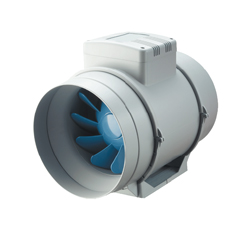
Categories
- Home
- Air Ventilation Fans
- Attic Ventilation Fans
- Barn Ventilation Fans
- Basement Ventilation Fans
- Bathroom Ceiling Ventilation Fans
- Bathroom Ventilation Fans
- Bathroom Ventilation Fans Installation
- Bathroom Ventilation Fans with Light
- Bathroom Wall Ventilation Fans
- Best Bathroom Ventilation Fans
- Best Ventilation Fans
- Ceiling Ventilation Fans
- Centrifugal Ventilation Fans
- Commercial Kitchen Ventilation Fans
- Commercial Ventilation Fans
- Confined Space Ventilation Fans
- Crawl Space Ventilation Fans
- Domestic Ventilation Fans
- Ductless Ventilation Fans
- Electric Ventilation Fans
- Exhaust Ventilation Fans
- Explosion Proof Ventilation Fans
- Fans for Ventilation
- Garage Ventilation Fans
- Greenhouse Ventilation Fans
- Home Ventilation Fans
- House Ventilation Fans
- Hunter Ventilation Fans
- In Line Ventilation Fans
- Industrial Roof Ventilation Fans
- Industrial Ventilation Fans
- Inline Ventilation Fans
- Jet Fans Basement Ventilation
- Kitchen Ventilation Fans
- Large Ventilation Fans
- Marine Ventilation Fans
- Mine Ventilation Fans
- Mining Ventilation Fans
- Panasonic Bathroom Ventilation Fans
- Panasonic Ventilation Fans
- Penn Ventilation Exhaust Fans
- Penn Ventilation Fans
- Portable Ventilation Fans
- Positive Pressure Ventilation Fans
- Quiet Ventilation Fans
- Roof Ventilation Fans
- Rooftop Ventilation Fans
- Room Ventilation Fans
- Shower Ventilation Fans
- Sidewall Ventilation Fans
- Small Ventilation Fans
- Solar Attic Ventilation Fans
- Solar Powered Attic Ventilation Fans
- Solar Roof Ventilation Fans
- Solar Ventilation Fans
- Sub Floor Ventilation Fans
- Tunnel Ventilation Fans
- Under House Ventilation Fans
- Underfloor Ventilation Fans
- Underground Ventilation Fans
- Ventilation Fans
- Ventilation Fans Bathroom
- Ventilation Fans FAQs
- Ventilation Fans for Grow Rooms
- Ventilation Fans for Kitchens
- Ventilation Fans Home
- Ventilation Fans Manufacturers
- Ventilation Fans Reviews
- Ventilation Fans Suppliers
- Wall Mounted Ventilation Fans
- Wall Ventilation Fans
- Whole House Ventilation Fans
- Window Ventilation Fans
- Woods Ventilation Fans
In Line Ventilation Fans
Efficient ventilation systems are mandatory for any type of building or structure in modern times. For home environments, ventilation fans are very important, especially in rooms like the bathroom, kitchen, garage, attic, etc. Hot air that is full of moisture needs to be periodically removed and replaced with cool, fresh air. In areas such as kitchens, smoke, fumes and strong odors are produced that need to be removed.
What are In Line Ventilation Fans?
These are basically ventilation fans that serve the same purpose as any other system of ventilation. In line ventilation fans remove stale air and replace it with fresh air too, but their design, functioning and installation are different.Most common in line ventilation fans are mounted on to the roof, the ceiling, or a space in the attic. There are several components that make up this fan unit and they all function together to circulate air. These are a sophisticated system of mechanical ventilation that can be used for air circulation throughout the house and not just in any particular room.
Differences Between In Line and Other Ventilation Fans
In order to decide what type of ventilation fan you require for your house, you need to understand the differences between different models of fans. Let’s take a look at some of the areas where in line ventilation fans differ from standard ones.- Installation: The most important difference is in the method of installation. A standard ventilation fan can be installed with ease. You could probably do it yourself without any professional help. The only thing that is important and needs consideration is the positioning of the fan. If done incorrectly, a standard fan may not produce effective ventilation. The installation of in line fans is a little more complicated and needs professional help.
- Noise: The noise produced by in line ventilation fans is much lower when compared with regular fans. In standard fans, there are various models that produce different levels of noise. Expensive fans tend to produce less noise while cheaper ones are noisier.
- Functioning: A standard ventilation fan is either wall or ceiling mounted, and creates suction by the rotation of its blades. This suction is responsible for the expulsion of stale air to the exterior environment, and fresh air is blown into the room. On the other hand, in line fans are fixed into the roof or a space in the attic. One duct is responsible for sucking air into the fan and a second duct removes this air from the building.
More About In Line Ventilation Fans
The components of an in line fan may vary with different manufacturers but they have a few basic ones that remain the same. The most common component of this ventilation system is of course, the fan. The size of the fan and its design needs to be decided depending on the ventilation requirements. A grille is also a part of this system and it is an exhaust point. Grilles also provide an aesthetic appeal. An internal ductwork is needed for the transportation of air.In line ventilation fans might be more expensive than regular ones but they are advantageous as well, due to their efficiency and lower noise produced.
Back to Top
